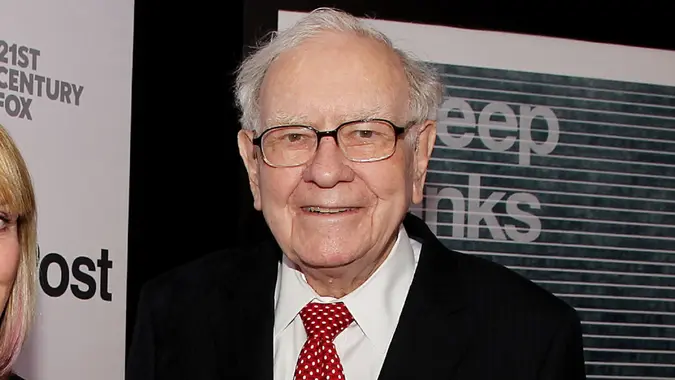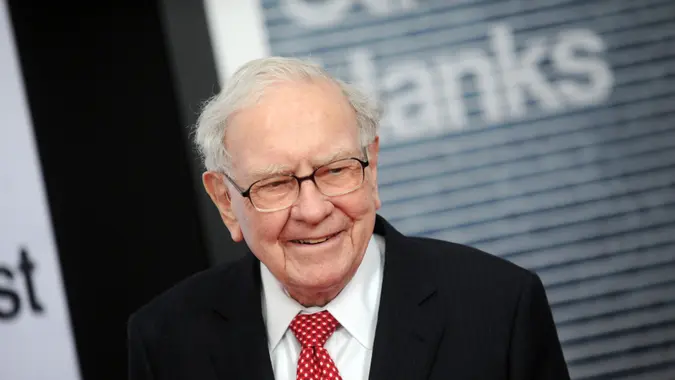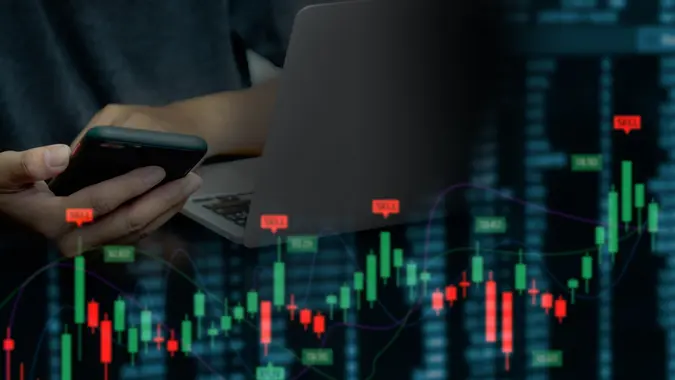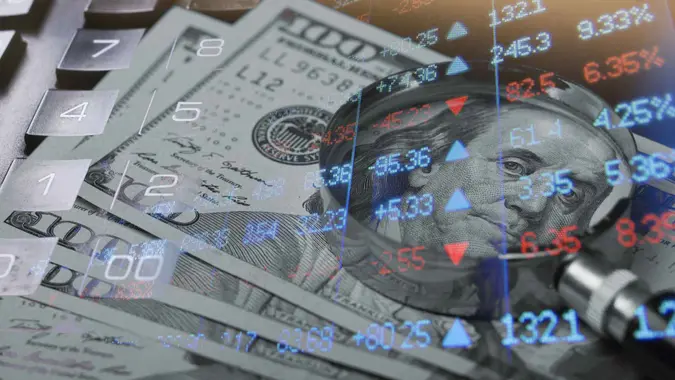Investing 2023: Put $12,000 to the Best Possible Use

Commitment to Our Readers
GOBankingRates' editorial team is committed to bringing you unbiased reviews and information. We use data-driven methodologies to evaluate financial products and services - our reviews and ratings are not influenced by advertisers. You can read more about our editorial guidelines and our products and services review methodology.

20 Years
Helping You Live Richer

Reviewed
by Experts

Trusted by
Millions of Readers
Depending on how much you earn, $12,000 can be a lot to invest, especially in one chunk. But as there are 12 months in the year, an easier way to get all that money invested is to break it down into monthly chunks of $1,000 each. By the end of the year, you’ll have all $12,000 invested, and you won’t have to scramble to invest the money in a single lump sum. Once you’ve decided to invest that money, there are certain steps you can take to help ensure that you get the best possible use out of it. Here are some suggestions.
Automate Your Investments
Deciding to invest $1,000 per month and actually doing it can be two different things. No matter how good your intentions are, it’s easy to “forget” to set aside your monthly $1,000 or wait until the end of the month to invest and then find out that the money has already been spent. That’s why the best first step when you decide to invest $1,000 per month is to automate it. Contact your bank or brokerage and set up a monthly $1,000 transfer as soon as your paycheck arrives. This way, not only can you avoid forgetting to invest, but you’ll also learn to “pay yourself first” and live off the money you have left after investing, rather than before.
Choose a No-Commission Broker
In the investment world, $1,000 isn’t that much. If you use a full-commission broker, you’ll end up paying a large percentage of your investment in fees. However, with a no-commission broker, all of your money instantly goes to work every month — and if/when you need to sell, you’ll get to keep the full amount you have invested as well.
Pick a Firm That Offers Fractional Shares
If you’re going to be buying stocks with your $1,000 per month, you’ll want to work with a firm that allows you to purchase fractional shares. For $1,000 per month, there are some stocks that you won’t be able to buy an entire share of, such as Berkshire Hathaway. At the very least, you won’t be able to buy exactly $1,000 of a share of stock each month, which means some of your money will be sitting idle in cash. When you’re working with such a limited amount to invest to begin with, you’ll want to maximize your monthly investment.
Consider a Diversified Investment
If you plow all of your money into a single stock, you’re relying on the fortune of that single company for the success of your entire portfolio. Until recently, this made investing $1,000 per month difficult to do. But with the rise of no-commission brokers, fractional shares and exchange-traded funds, with $1,000 per month, you can now easily diversify your portfolio with a single purchase. For example, you can use your $1,000 per month to buy shares of an S&P 500 index ETF, and you’ll instantly have exposure to 500 different stocks — and your investment will track the returns of one of the major market averages. There are countless ETFs to choose from, and while not all of them are diversified, most offer portfolios of tens if not hundreds of individual stocks.
Use a Robo-Advisor
Robo-advisors are a good fit for many investors who are setting aside $1,000 per month. For fees that generally run only about 0.25% per year, robo-advisors can allocate your money across a wide range of ETFs and give you a portfolio tailored to your self-reported investment objectives and risk tolerance. For example, depending on your investment profile, you might have your money spread out across large-cap growth stocks, small-cap value stocks, international stocks and high-quality bonds.
Dollar-Cost Average
Although you can choose any number of investments to use your $1,000 per month, to get the benefits of dollar-cost averaging, stick with the same investment. This way, when the market is down, you’ll be buying more of your investment at cheaper prices, and when the market rises, you’ll be purchasing less. Over time, you’ll get an average cost for your position that can help smooth out the ups and downs of the general market.
 Written by
Written by  Edited by
Edited by 

























